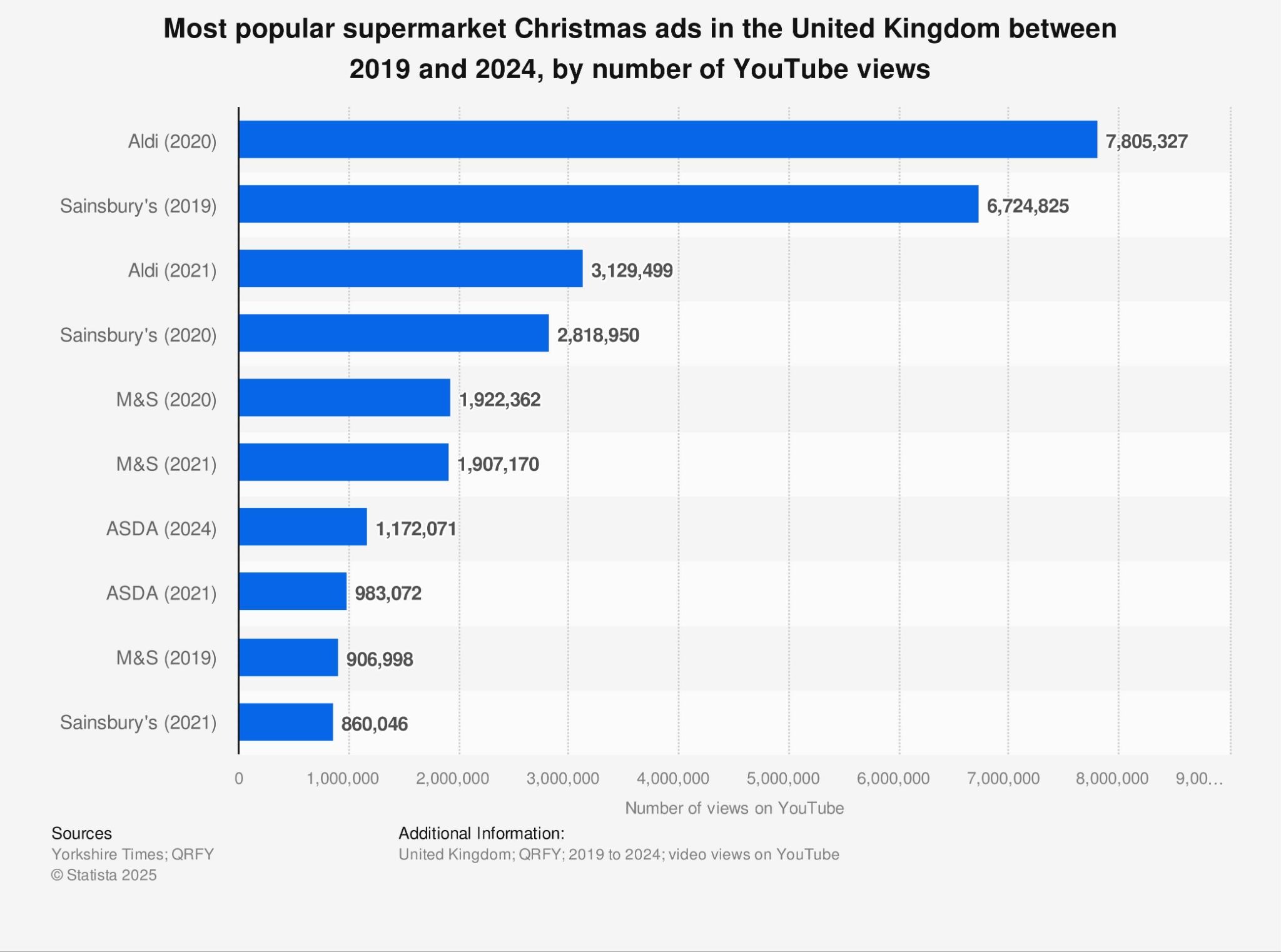
Halloween’s over, and that means one thing: Christmas is coming.
By November 1st, UK television screens light up with a flurry of big-brand festive ads from John Lewis, Marks & Spencer, and Coca-Cola, who are running an AI-generated ad for the second year, much to the dismay of its consumers. For many Brits, these adverts have become a cultural marker – the moment Christmas officially begins.

Source: Statista
Of course, US consumers also get excited about the Christmas period beginning, but with Thanksgiving to look forward to first, the UK doesn’t have a big seasonal milestone to punctuate November. So, Christmas ads have stepped in to fill that gap, creating their own kind of national event.
Yet in a world where we can skip, scroll past, or pay to avoid ads altogether… do people still care?
There’s no denying that Christmas ads hold cultural weight. They’re nostalgic, capitalizing on shared memories of family, togetherness, and traditions.
Their release marks a moment in the calendar, signalling that it’s finally time to get festive. The big-brand, big-budget Christmas ad releases immediately fuel cultural conversation every year, as the internet debates which brand “won Christmas” based on story, soundtrack, or sentiment.
Despite the festive buzz that traditional Christmas ads spark, the media landscape has changed, and so have consumers.
And it raises the question: who are these ads really for?
Do younger audiences, Gen Z and even younger millennials, care about the annual John Lewis premiere? Or are these campaigns mostly nostalgic touchpoints for Gen X and Boomers, who grew up with TV as the centre of festive tradition?
Another issue that arises from brands putting a significant amount of budget into one hero television ad is the lack of true reflection of the world their consumers live in. They often feature traditional family units – two parents, two kids, a sweet grandparent – and appear idealistic. There’s recently been an increase in brands introducing family-friendly characters, such as Sainsbury’s and the BFG, Asda and the Grinch, and Aldi’s yearly “Kevin the Carrot” ad, as a way to tackle the backlash surrounding inclusivity.
The Christmas ad formula still works emotionally – but culturally, it’s losing traction.
Consumers still love stories, nostalgia, and emotional resonance, but they’re choosing different storytellers.
Trusted brands once ruled the advertising space, but now trusted voices – creators, influencers, and peers – drive emotional and purchasing decisions.
It’s not that people dislike Christmas ads. It’s that they’d rather hear from someone they follow and trust about what matters (or what to buy) this season.
If traditional Christmas ads are losing their sparkle, Influencer Marketing is the modern-day glow-up.
Creators offer what big-budget TV ads can’t – relatability, community, and reach across the platforms where consumers actually spend their time.
Rather than telling a mass audience how to feel, creators show real people sharing real experiences — and that’s far more powerful.
The brands that adapt to changing consumer habits will win during the holiday season, but also build trust year-round.
Brands should consider:
Traditional Christmas ads aren’t going anywhere – at least for now. They still make audiences cry, smile, and sing along, but their power to shape culture is fading. Creators are the modern-day cultural catalysts.
As audiences move towards personalized, creator-driven content, the brands that truly connect this season might not be the ones with the biggest budgets, but the ones with the most human touch. The best Christmas ad might not air on TV, but appear on the FYP.
Want to chat about connecting with your consumers authentically during the holiday season and entering 2026? Reach out to us at hello@digitalvoices.com.